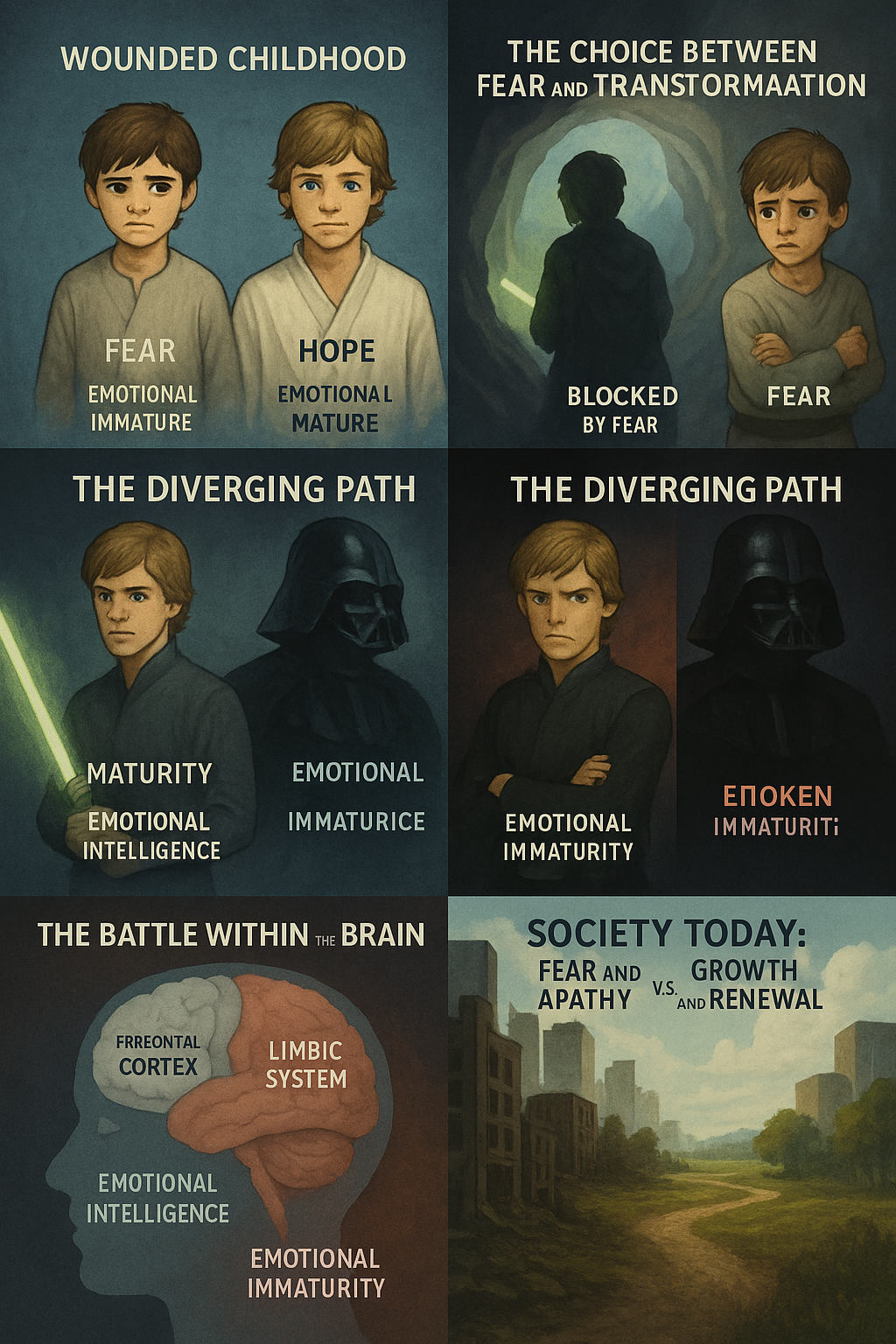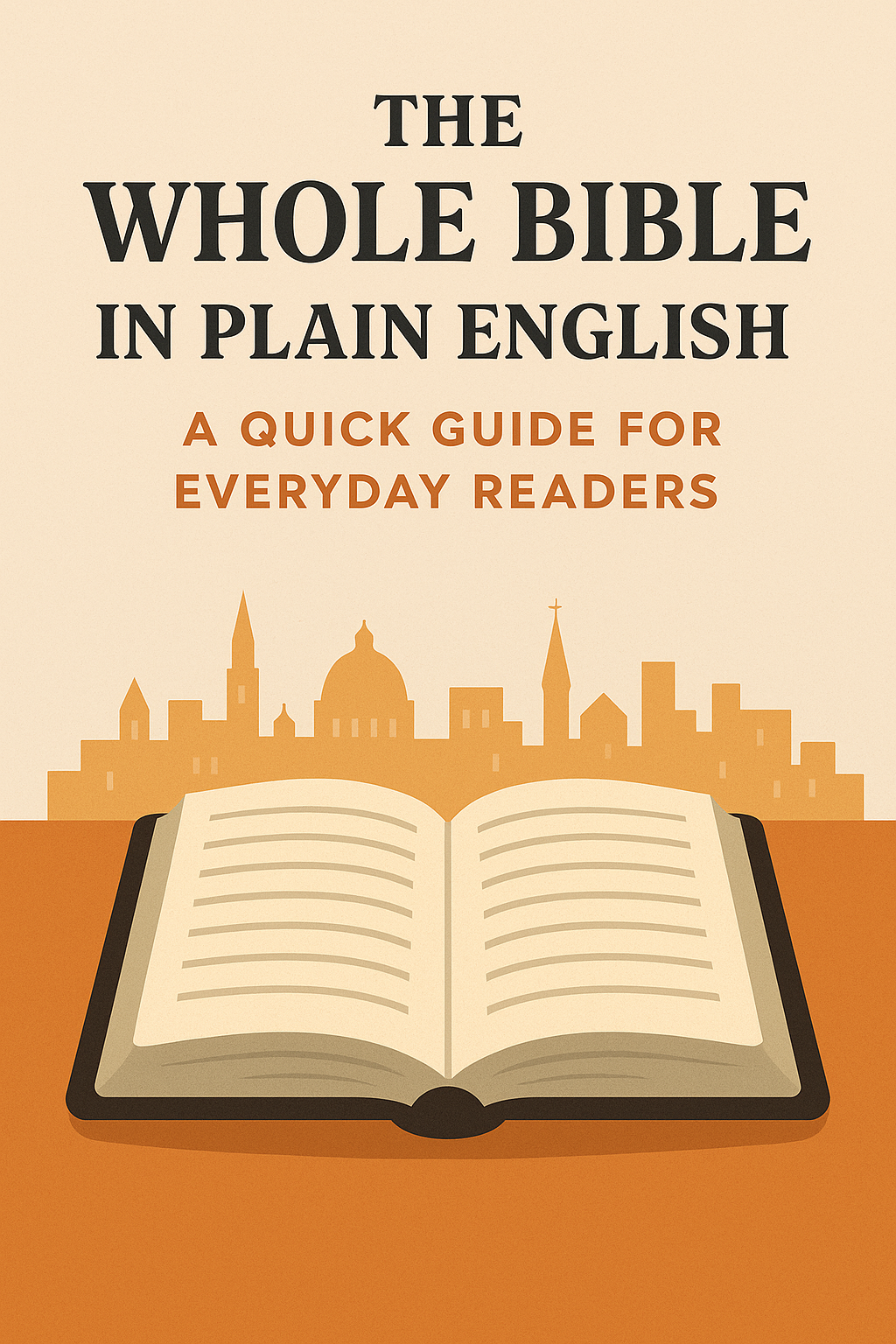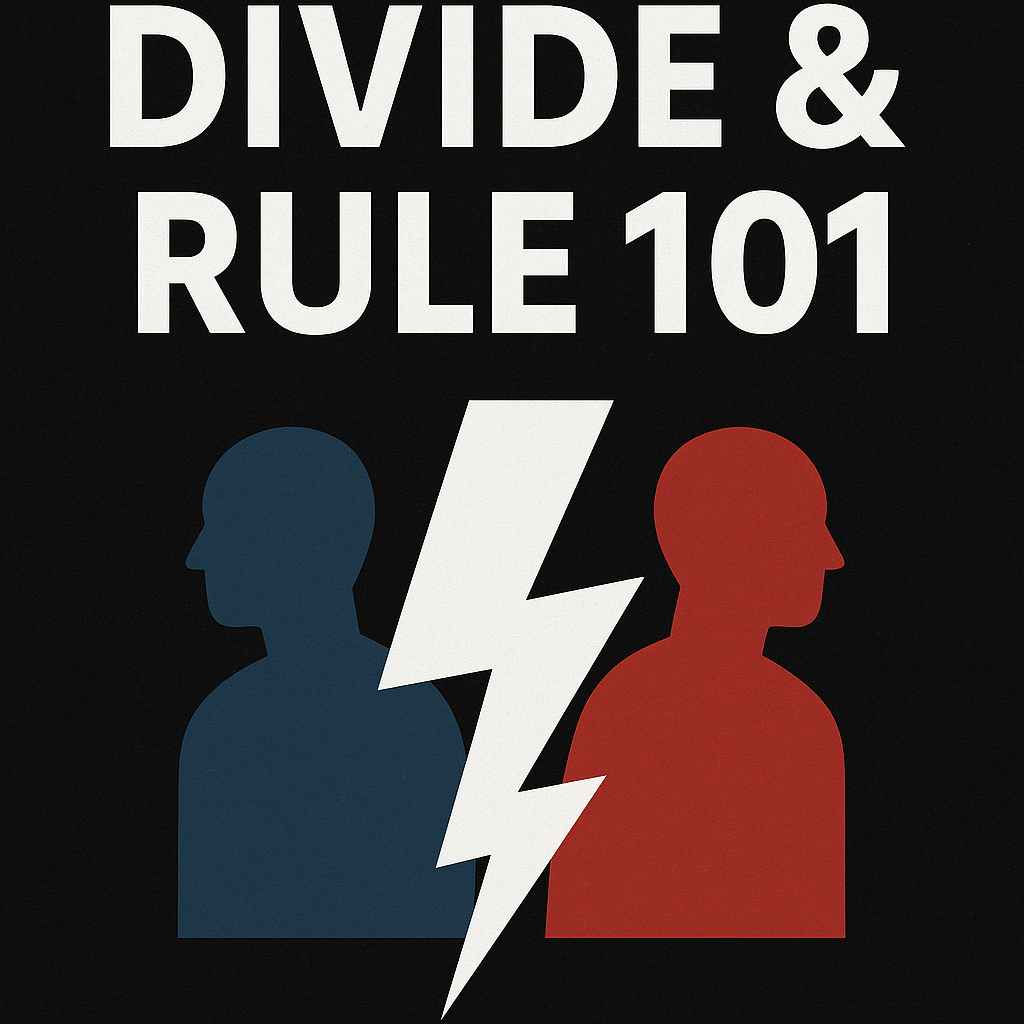In the mythic saga of Star Wars, few character arcs carry as much psychological and symbolic weight as the parallel lives of Anakin Skywalker and his son, Luke. Viewed through the lens of trauma psychology, emotional development, and the Hero’s Journey, their stories become more than epic fiction. They are living allegories for the battle within every human soul—the choice between emotional maturity and stagnation, truth and self-deception, liberty and bondage.
1. Wounded Childhoods and the Brain Under Siege
Both Anakin and Luke Skywalker begin life with significant emotional wounds. Anakin is born into slavery, separated from his mother, and indoctrinated into a rigid Jedi Order that values stoicism over emotional honesty. This early trauma aligns precisely with the patterns described in trauma-informed neuroscience: his amygdala—responsible for fear, emotion, and survival—is hyperactivated, and the limbic system remains dominant. He is never granted the nurturing, rhythmic, relational experiences needed to form strong prefrontal cortex connections—the seat of logic, morality, empathy, and decision-making.
Luke, too, is orphaned and raised on a desert planet under the harsh tutelage of Uncle Owen. But while he experiences loss, his trauma is not as intense or isolating. He forms relationships. He is mentored (first by Obi-Wan, later by Yoda), and crucially, he chooses to face his pain rather than suppress or project it. He enters the metaphorical cave—literally and symbolically—and does the work of healing, introspection, and transformation.
2. The Hero’s Journey: Two Paths from the Same Cave
In Joseph Campbell’s Hero’s Journey, the “cave” is the space of initiation, suffering, and self-discovery. Both Anakin and Luke enter this cave—Anakin metaphorically when he faces the death of his mother and betrayal of the Jedi; Luke literally in Dagobah’s Force cave and psychologically as he faces Vader.
The outcomes diverge:
- Anakin chooses to avoid pain at all costs. He feeds the bad wolf, seeking power to prevent loss rather than confronting the grief. His trauma becomes his prison. He never develops emotional intelligence—his feelings are his facts. The limbic loop wins, and he becomes Darth Vader: a figure of suffocating bondage—encased in armor, ruled by fear, unable to connect.
- Luke, by contrast, chooses the path of introspection and truth. He faces his fear, grief, and temptation. He feeds the good wolf—disciplined, principled, and emotionally grounded. He matures. In doing so, he not only redeems himself but offers redemption to Anakin—something Anakin could never do for himself.
3. The Mirror of the Mind: Luke and Anakin in Us All
In this mirrored mythology, we are all both Luke and Anakin. We face the same crossroads:
- Will we mature, develop our prefrontal cortex through discipline, truth-seeking, emotional intelligence, and principled living?
- Or will we remain immature, trapped in emotional reactivity, comfort zones, fear loops, and external blame?
The question is not merely personal—it is civilizational.
4. Emotional Development and the Fragile Chain of Freedom
Steven Covey, in The 7 Habits of Highly Effective People, distinguishes between personality ethics (image, status, manipulation) and character ethics (principle-centered living). A culture dominated by personality ethics mirrors Anakin’s fall: self-centered, image-obsessed, craving validation.
This lines up with the Fragile Chain of Freedom:
| Stage | Luke | Anakin |
|---|---|---|
| Faith | Trusts the Force, mentors | Abandons faith, craves control |
| Courage | Faces inner demons | Avoids pain, reacts emotionally |
| Liberty | Chooses, forgives | Enslaves self to fear |
| Abundance | Uses wisdom for others | Seeks power for himself |
| Complacency | Reflects deeply | Rejects reflection |
| Apathy | Acts with love | Acts with anger |
| Dependence | Disciplines emotion | Becomes ruled by emotion |
| Bondage | Avoided | Embodied (as Vader) |
As a nation drifts from character toward personality, from self-mastery to self-service, it mirrors Anakin’s arc—not Luke’s. The danger is cultural: a society addicted to convenience, fear, and appearance may lose its capacity to grow. Instead of passing through the cave, it builds an empire of avoidance.
5. The Path of Healing: Facing the Inner Empire
Luke’s strength came not from avoiding pain but from transforming it. He matured by re-entering the cave again and again—facing illusions, temptations, and truths. This is the template for rewiring the wounded brain.
- Safety and trust begin the healing.
- Courage and reflection deepen it.
- Sacrifice and love complete it.
As a people, we must walk the same path. We must face what we fear in ourselves, ask hard questions, stop mistaking emotions for truth, and reclaim the habits of discipline and virtue. The fate of a soul, and the fate of a civilization, hinge on which path we choose—Luke’s or Anakin’s.
6. The Final Lesson: Growth Is the Choice Between Wolves
As the Cherokee parable goes, two wolves live inside each of us. One is fear, anger, deceit. The other is love, discipline, truth. The one that wins is the one you feed.
Luke fed the good wolf. Anakin fed the bad—until love pulled him back.
The mirror is in front of us now.
What will we feed?






